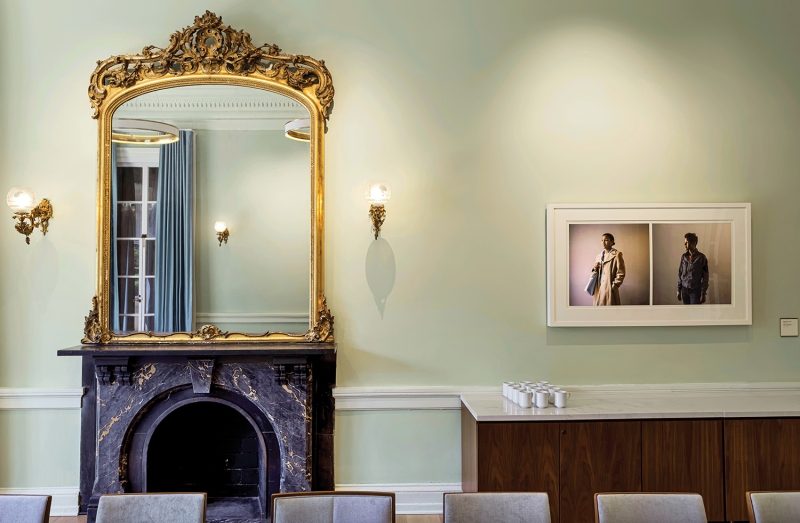By the time senior administrators at Princeton University decided to renovate Prospect House, an 1852 Italianate mansion used for meetings and events, it was dark, dated, and dysfunctional. The recessed front door was cloaked in shadows and inaccessible to anyone in a wheelchair. Inside, paint colors were gloomy, furniture was tired. Kitchen facilities struggled to keep up with catering demands, and the audiovisual equipment might consist of an antiquated projector and screen. It was time to “press the restart button,” recalls university architect Ron McCoy, who oversees changes to the campus.
The university had general guidance for the project from a master plan it adopted in 2017 that calls for the entire 700-acre New Jersey campus to be converted to geo-exchange technology for heating and cooling. As existing buildings are being renovated and new ones built, the plan also calls for them to be welcoming and foster a sense of belonging for a student population that has grown increasingly diverse.
Princeton University’s Prospect House Undergoes A Shining Revamp
In the Rose Room at Prospect House, an 1852 Italianate mansion at Princeton University in New Jersey that’s been recently renovated by Verona Carpenter Architects, a custom console, contemporary photography by Josephine Sittenfeld commissioned by the Princeton University Art Museum, Manila chairs by Lievore Altherr Molina, and new wall paint matriculate with a marble fireplace mantel and a gilded mirror, both original.
To tackle Prospect House, McCoy and the renovation committee selected Irina Verona and Jennifer Carpenter of New York firm Verona Carpenter Architects, which focuses on inclusive design, striving to ensure spaces accommodate the broadest range of bodies and minds, with particular attention to sensory and physical disabilities. Verona and Carpenter were completing another project on campus, so their team was already steeped in the school’s priorities for its built environment. Also helping to tip the scale in their favor is that Verona is a Princeton undergrad alum, providing her with an intimate feel for the campus, which features an eclectic assortment of buildings, Prospect House, a National Historic Landmark, among the older structures.
Built by Philadelphia architect John Notman as a single-family home, the brownstone building was donated to the school in 1878 and for decades served as the official residence of university presidents, among them Woodrow Wilson. Pietro Belluschi and Warren Platner were hired to loosen it up when it became a faculty club in 1968, adding a glass-walled restaurant at the rear and bringing a bachelor-pad vibe to the interiors, complete with shag rugs. Robert Venturi turned back the clock and restored formality to Prospect House when he got involved in 1988. Verona Carpenter sought to capture aspects of this long and varied heritage—“a layering,” Verona calls it—in an overhaul of the 28,270-square-foot, three-story structure that involved restoring the exterior, opening up interior walls while preserving architectural features, installing state-of-the-art MEP and technology systems, and generally enlivening what had “felt frozen” in time, Carpenter notes.
How Verona Carpenter Breathes New Life Into This Princeton Building
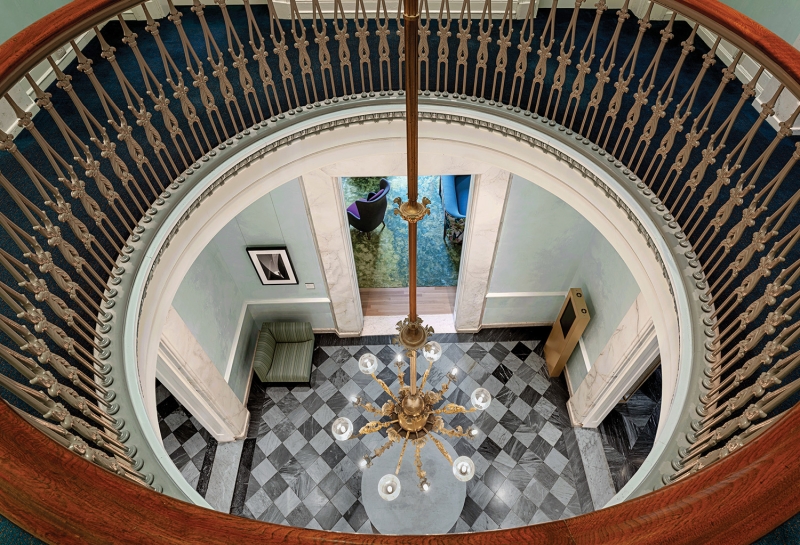
Verona Carpenter restored the centuries-old two-story chandelier and black-and-white marble flooring appointing the entry hall rotunda.
For a sense of the changes the firm has wrought, consider the entry, where Verona and Carpenter moved the port cochere and front steps outward so they could tuck gently sloping brick ramps on either side. “Everyone goes in the same way now,” Carpenter adds. “That’s really important.” The front door itself was also pushed outward, with glass replacing solid wood, bringing transparency to the facade; now there are views all the way through the building to the greenery at the back.
The interior that visitors encounter upon entering still feels historic—the rotunda has retained its stained-glass dome, two-story chandelier, and black-and-white marble floor, all centuries old and restored by Verona Carpenter. But wall colors are fresh: Verona and Carpenter discovered a robin’s-egg blue on the walls of a third-floor storage space and mimicked it for the rotunda, while other colors came from the dome’s stained glass, such as the celadon green in the Magnolia Common Room, where the backs of a pair of streamlined sofas are upholstered in an exuberant floral velvet. But there are deeper tones, too, like aubergine in the Dogwood Room. Inclusive design, according to Verona Carpenter, includes a range of hues so that people can find a space that works for them. Furnishings throughout, too, offer choice: Chairs are high- or low-backed or without backs at all; rockers suit those who are wired to keep moving, even while sitting. Verona and Carpenter also sought out pieces by women and people of color; the pendant fixture in the Cedar Room, for example, is from 54kibo, a company founded by Ghanaian-born Nana Quagraine.
Prospect Hall Embraces The Diversity of Today & Tomorrow
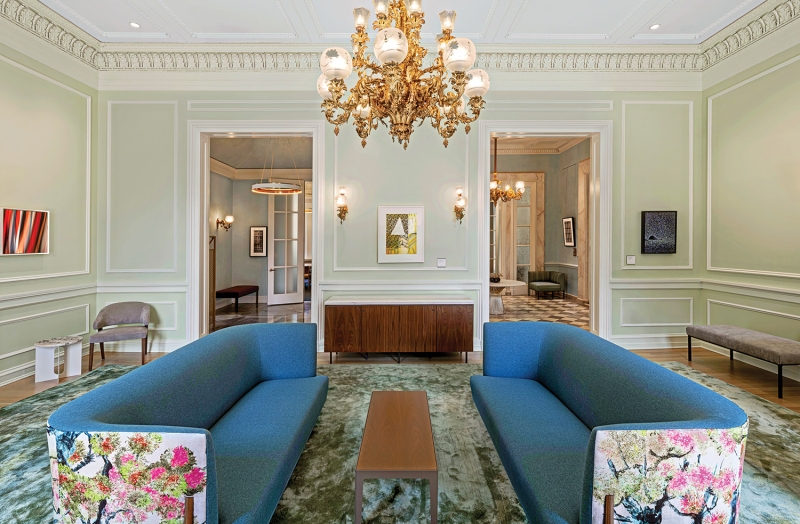
In the Magnolia Room, beneath an original chandelier, Miry sofas by Douglas Levine—their backs upholstered in patterned velvet—flank a Cory Grosser coffee table, all standing on a custom rug.
And if the house was once decorated with framed portraits of former university presidents, it’s now filled with varied contemporary art. Verona and Carpenter identified places where pieces could go, and the Princeton University Art Museum called for submissions from students, staff, faculty, and alumni, then selected paintings, sculptures, and photography. Even room names were changed to eliminate any whiff of exclusivity. The Presidential Dining Room, for one, became the Rose Room. “Renaming was part of the objective of making the building more inclusive,” Verona explains.
Diversity in seating options—wide, narrow, lounge—also characterizes Prospect Hall’s faculty restaurant, the 1968 addition dubbed the Garden Room, so called because it’s wrapped in glass visually merging it with the landscape; Verona Carpenter’s choice of carpet tile in a swirl of verdant greens further blurs the line between inside and out. Its famous crabcakes are still on the menu. But after Verona and Carpenter added acoustical insulation to the coffered ceiling, to aid the hard of hearing or those distracted by competing sounds, diners can now hear what their companions are saying.
Honoring Princeton’s Legacy Through Design
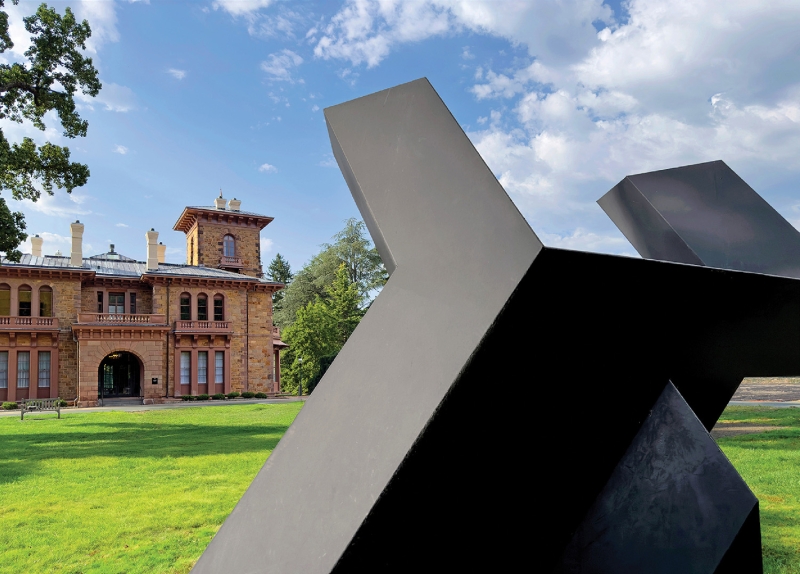
The brownstone facade of the building, a 28,270-square-foot former home that is now a National Historic Landmark and faces Tony Smith’s Moses from 1967, was power-washed, its window frames repaired and repainted.
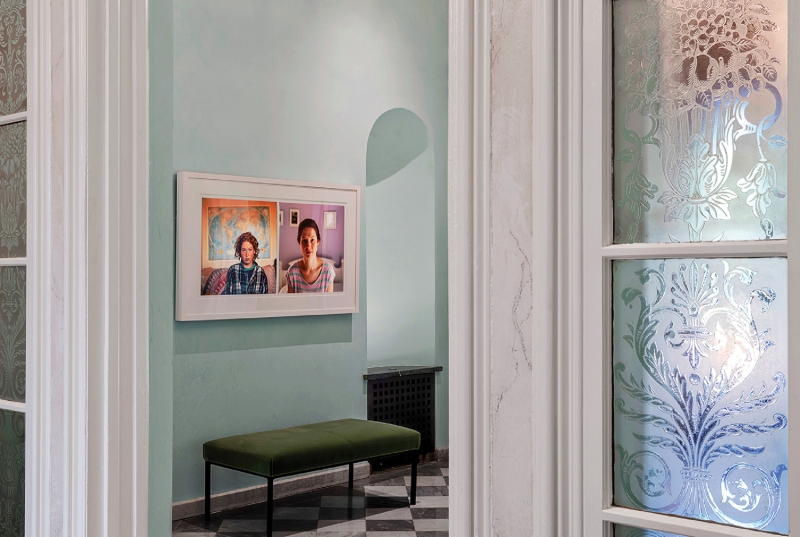
The bench in the entry hall is by Piergiorgio Cazzaniga.
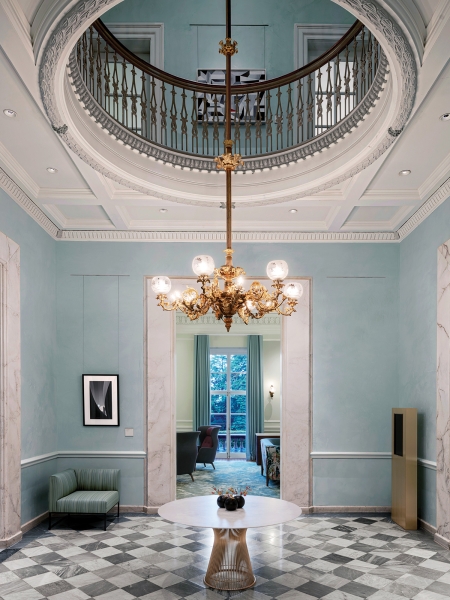
Warren Platner’s 1966 Platner table nod to his 1968 involvement in the building; it’s joined by Lievore Altherr Molina’s Siesta SF3007 corner sofa and custom bronze signage.
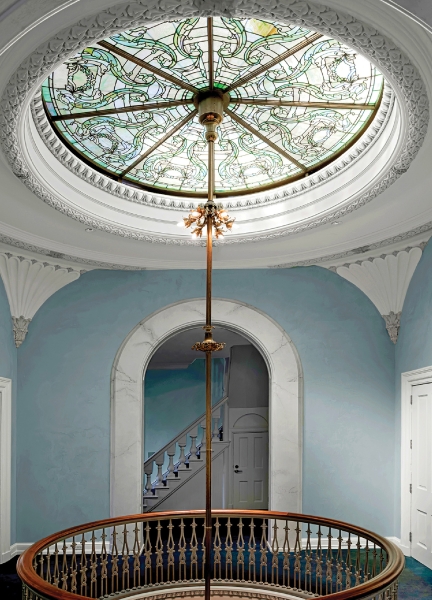
Dating to 1852, the restored stained-glass dome capping the rotunda inspired the project’s color palette.
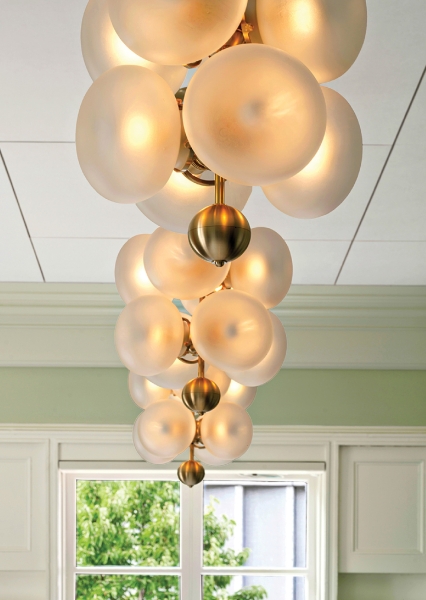
The Cedar Room’s Allure pendant fixture in smoked glass and brass.
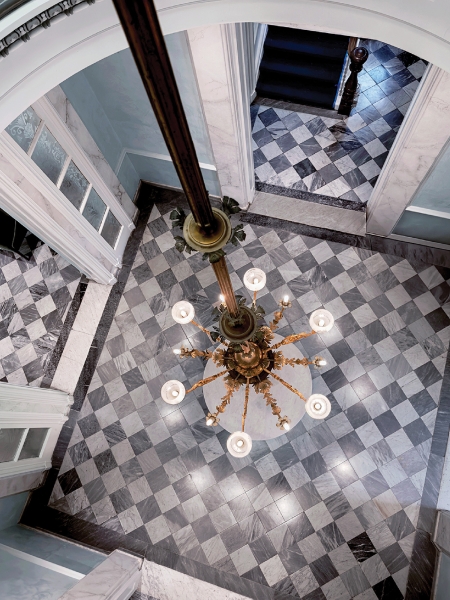
The entry’s marble-tile floor, original to the mansion.
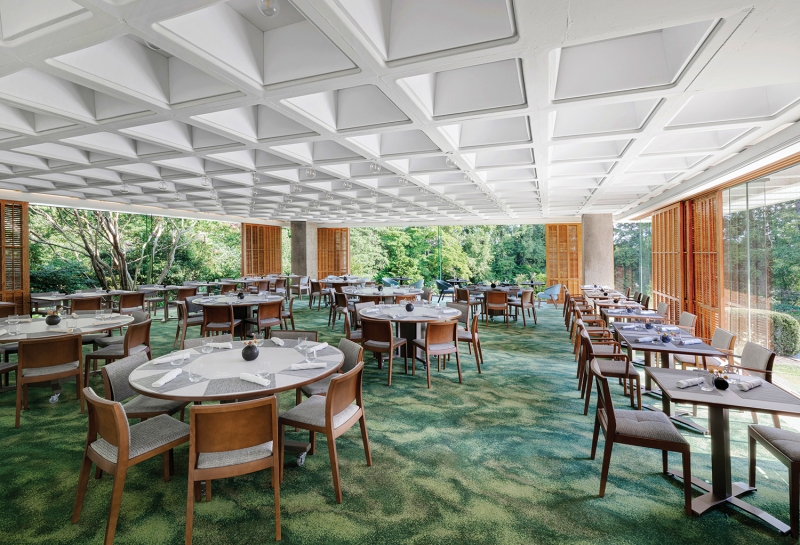
In the Garden Room, where acoustical insulation was added to the existing coffered ceiling, custom 36-inchsquare, wool-nylon carpet tile visually merges the restaurant with the landscape.
Pastel Hues + Diverse Art Revive Princeton University’s Prospect Hall
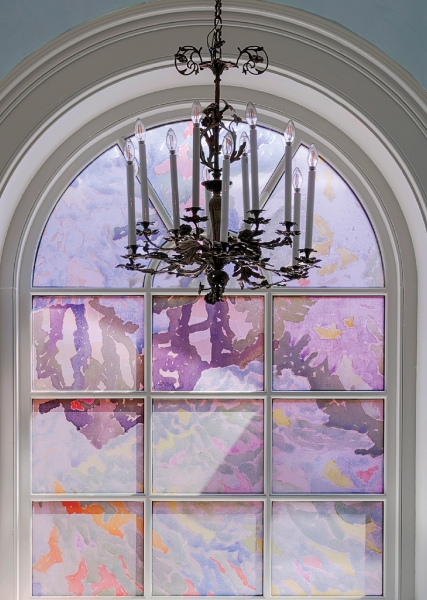
A main stair window’s custom adhesive film of a landscape.
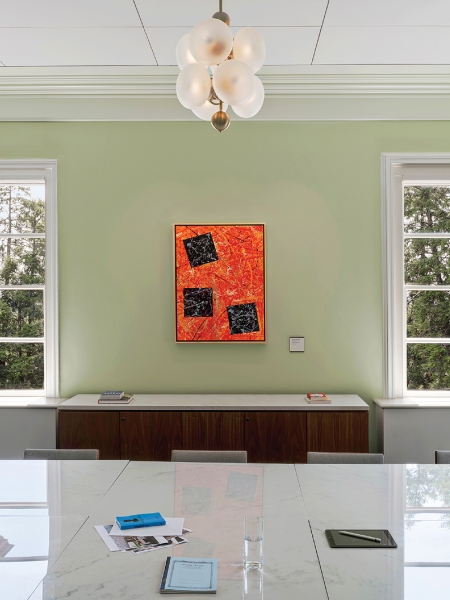
Tables with flip tops and casters for flexibility in the Cedar Room.
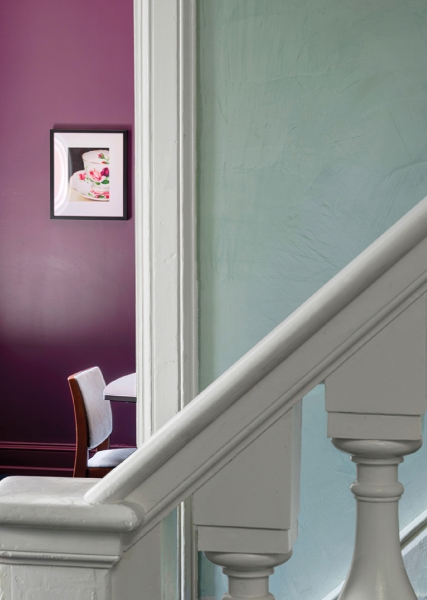
Venetian plaster preceding the Dogwood Room’s aubergine wall paint.
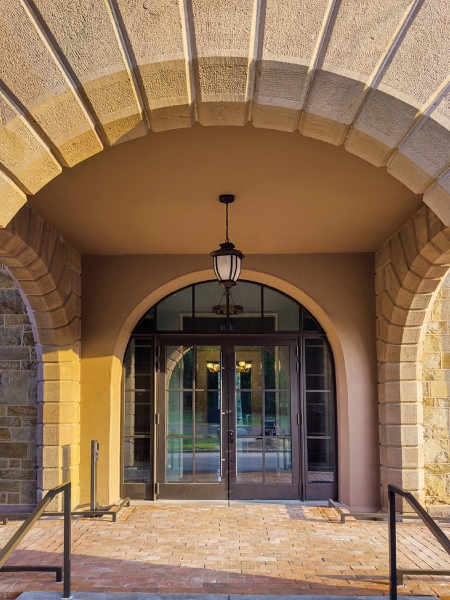
Railings of powder-coated aluminum with integral LEDs installed along the steps leading to the porte cochere.
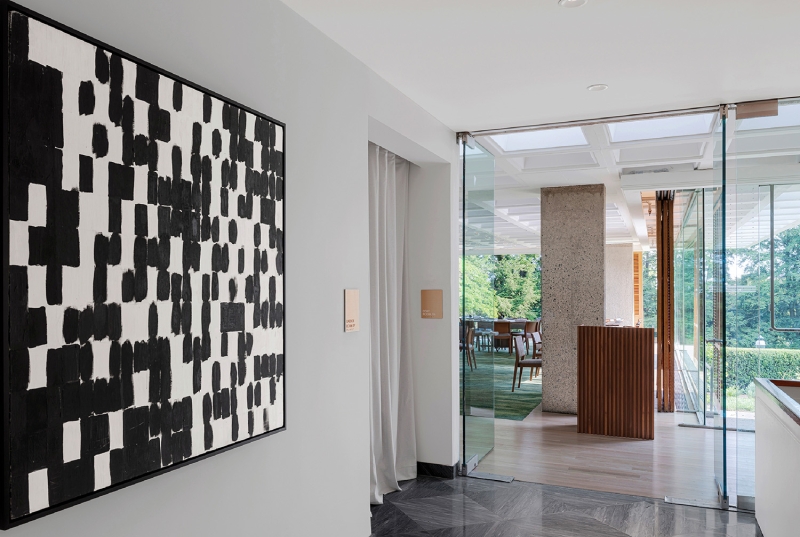
In the corridor leading to the Garden Room, new flooring is Bardiglio Blue Venato marble and the oil on panel by Megan Duval.
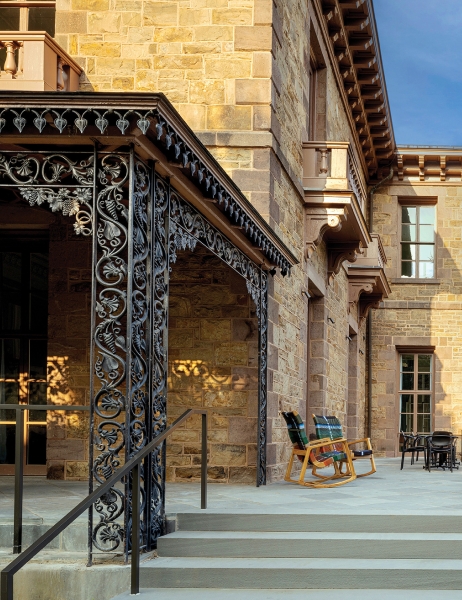
The newly raised bluestone terrace, with Arenal rocking chairs in FSC–certified teak, allows access from adjacent rooms for the physically impaired.

Cahn Cocktail chairs by Levine line its perimeter.
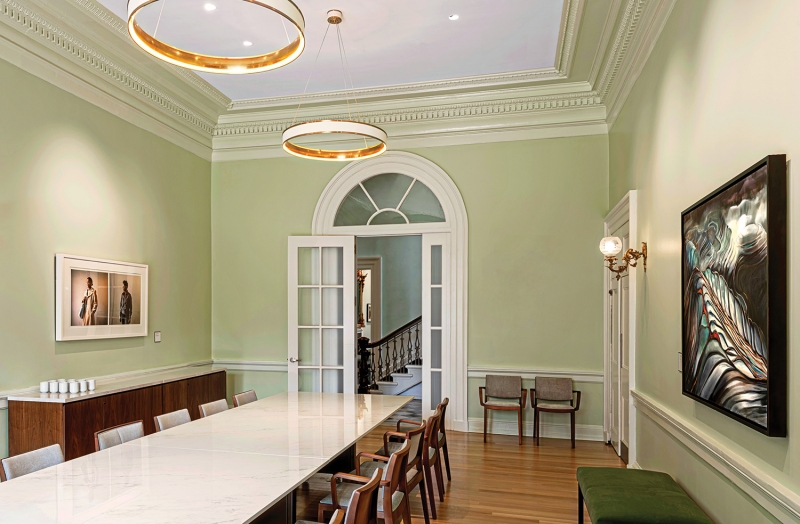
Ring chandeliers by Chapman & Myers echo the gold of the original sconces in the Rose Room, renamed from the Presidential Dining Room to be more inclusive. PROJECT TEAM
VERONA CARPENTER ARCHITECTS: IRIS KIM; CHARUL PUNIA; BIRANI NYANAT; EMILY EVANS. FIELD OPERATIONS: LANDSCAPE ARCHITECT. CLINE BETTRIDGE BERNSTEIN LIGHTING DESIGN: LIGHTING DESIGN. KEAST AND HOOD: STRUCTURAL ENGINEER. POLISE CONSULTING ENGINEERS: MEP. VAN NOTE HARVEY + PENNONI: CIVIL ENGINEER. WSP: FACADE CONSULTANT. MASSIMINO BUILDING CORP: GENERAL CONTRACTOR.
FROM FRONT PRODUCT SOURCES
ANDREU WORLD: CHAIRS (ROSE ROOM, GARDEN ROOM), BENCHES (ENTRY, MAGNOLIA ROOM, GARDEN ROOM), CORNER SOFA (ROTUNDA). MASAYACO.: ROCKING CHAIRS (TERRACE). THE BRIGHT GROUP: SOFAS, CHAIR (MAGNOLIA ROOM). TIMOROUS BEASTIES: FLORAL SOFA FABRIC. STEELCASE: COFFEE TABLE. AUDO COPENHAGEN: SIDE TABLE. CROSBY STREET STUDIO: CUSTOM RUG (MAGNOLIA ROOM), CUSTOM CARPET TILE (GARDEN ROOM). 54KIBO: PENDANT FIXTURE (CEDAR ROOM). PRISMATIQUE DESIGNS: TABLES (CEDAR, GARDEN, ROSE ROOMS). KNOLL: TABLE (ROTUNDA). ABC STONE: FLOORING (HALL). VISUAL COMFORT & CO.: CHANDELIERS (ROSE ROOM). THROUGHOUT SHERWIN-WILLIAMS COMPANY: PAINT.

